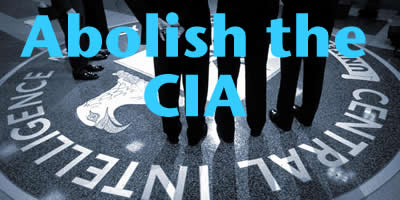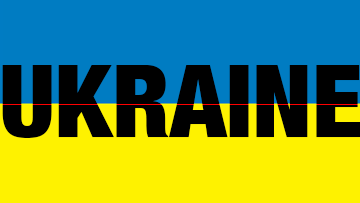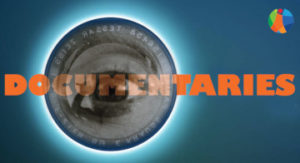By David Swanson
Every government on earth, beginning with the United States, should shut down and be done with secret agencies, spy agencies, agencies used for murder, torture, bribery, election-manipulation, and coups.
While these agencies prevent the public from knowing what is being done in its name, they do not acquire any knowledge that benefits the public and that couldn’t have been acquired openly, lawfully, through simple research, diplomacy, and law-enforcement actions that respect human rights.
While these agencies occasionally succeed in their criminal enterprises on their own terms, those successes always create blowback that does far more damage that the good — if any — accomplished.
The CIA and all of its relatives in the U.S. government and around the world have normalized lying, spying, murdering, torturing, government secrecy, government lawlessness, distrust of foreign governments, distrust of one’s own government, distrust of one’s own qualifications to participate in self-government, and acceptance of perma-war.
Labeling terrorism “counter-terrorism” doesn’t make it something other than terrorism and doesn’t change the fact that it increases rather than decreases terrorism by others.
We should do something that Woodrow Wilson never did, and take seriously the first of his 14 points: “Open covenants of peace, openly arrived at, after which there shall be no private international understandings of any kind but diplomacy shall proceed always frankly and in the public view.” This is as critical a democratic reform as public financing of elections or public counting of paper ballots.
Annie Jacobsen’s latest book is called Surprise, Kill, Vanish: The Secret History of CIA Paramilitary Armies, Operators, and Assassins. It’s based on interviews with former top members of the CIA who simply adore the CIA. The book simply adores the CIA. Yet it remains a chronicle of endless disastrous failure after failure after failure. This is a collection of pro-CIA voices leaking super-top-extra-special-secret information, much of it over 50 years old. And yet there’s not a speck of justification for the CIA’s existence to be found.
Jacobsen’s book on Operation Paperclip, which I reviewed here, told the story of how the U.S. military and CIA hired large numbers of former Nazis. The scandal that one is supposed to see in that story is, apparently, that people had been Nazis, not that they had participated in horrific atrocities, because participating in horrific atrocities is depicted as a courageous and noble service in Jacobsen’s newer book.
There is, of course, a case to be made for the existence of Nazi influence on post-WWII U.S. atrocities. As I wrote at the link above,
“The U.S. military shifted in numerous ways when former Nazis were put into prominent positions. It was Nazi rocket scientists who proposed placing nuclear bombs on rockets and began developing the intercontinental ballistic missile. It was Nazi engineers who had designed Hitler’s bunker beneath Berlin, who now designed underground fortresses for the U.S. government in the Catoctin and Blue Ridge Mountains. Known Nazi liars were employed by the U.S. military to draft classified intelligence briefs falsely hyping the Soviet menace. Nazi scientists developed U.S. chemical and biological weapons programs, bringing over their knowledge of tabun and sarin, not to mention thalidomide — and their eagerness for human experimentation, which the U.S. military and the newly created CIA readily engaged in on a major scale. Every bizarre and gruesome notion of how a person might be assassinated or an army immobilized was of interest to their research. New weapons were developed, including VX and Agent Orange. A new drive to visit and weaponize outerspace was created, and former Nazis were put in charge of a new agency called NASA.
“Permanent war thinking, limitless war thinking, and creative war thinking in which science and technology overshadowed death and suffering, all went mainstream. When a former Nazi spoke to a women’s luncheon at the Rochester Junior Chamber of Commerce in 1953, the event’s headline was ‘Buzz Bomb Mastermind to Address Jaycees Today.’ That doesn’t sound terribly odd to us, but might have shocked anyone living in the United States anytime prior to World War II. Watch this Walt Disney television program featuring a former Nazi who worked slaves to death in a cave building rockets. Before long, President Dwight Eisenhower would be lamenting that ‘the total influence — economic, political, even spiritual — is felt in every city, every State house, every office of the Federal government.’ Eisenhower was not referring to Nazism but to the power of the military-industrial complex. Yet, when asked whom he had in mind in remarking in the same speech that ‘public policy could itself become the captive of a scientific-technological elite,’ Eisenhower named two scientists, one of them the former Nazi in the Disney video linked above.”
It may be worth noting that all five Democratic members of Congress who just voted for continuing the gravest human disaster currently underway, the war on Yemen, are former members of the CIA and/or military. Total influence means the end of awareness of the influence. While Jacobsen’s book doesn’t document any successes, it exhibits a certain kind of success through the familiar propaganda subtly built into it.
“Every operation reported in this book, however shocking, was legal,” Jacobsen claims, despite acknowledging some 450 pages later the existence of the Kellogg-Briand Pact, and despite noting the existence of the Geneva Conventions and the UN Charter, and despite no doubt being aware that the nations within which the CIA commits many of its crimes have laws forbidding them. Those nations don’t count. They’re made up of nothing but “indigs,” the term used throughout the book for mere indigenous people. On page 164 Jacobsen writes: “The reason for SOG’s [Studies and Observation Group] highly classified nature was that it violated the Geneva Agreement of 1962, the declaration on the neutrality of Laos, which forbade U.S. forces from operating inside the country.” But don’t be shocked or you’ll forget that everything the United States (not just Richard Nixon) does is, by definition, legal.
Jacobsen opens and closes the book by claiming that the purpose of all the horrors recounted has always been to avoid WWIII, but never does she provide the slightest documentation or evidence or logic for that claim. She also claims that smaller-scale murders and sabotage are justified as a “third option” because sometimes war is a bad idea (when isn’t it a bad idea? she never says) and sometimes diplomacy is “inadequate” or has “failed” (when? how? she never says). Wars go on failing on their own terms for decades but we’re never told to resort to diplomacy. What counts as diplomacy failing and justifying a resort to war? The answer is not very little. The answer is: less than nothing.
Of course, Jacobsen also builds her case on the false and unargued claim that Pearl Harbor was a “surprise attack.” In the same paragraph she suggests that Hitler invented the very idea of all-out war without proper rules and decency. She states in one sentence that Reinhard Heydrich was a main architect of the Final Solution, and in the next that he was at the top of a British kill list, as if to imply some connection between the two facts, playing into the propaganda that the allies fought the war to prevent murder. (She pulls the same trick with the nuclear bombings of Japan and the ending of the war, implying a causal connection to any indoctrinated reader.) Of course when the British killed Heydrich, the Nazis killed 4,000 people as revenge, and halted no other activities. Hurray!
From the beginning of the book to the end, the central character, Billy Waugh, is depicted as acting out a childish childhood fantasy about engaging in beneficial and dangerous violence. This is repeated so often that it’s normalized. We’re not supposed to despair that people acting out childish fantasies have been given the power to murder and wreak havoc. We’re supposed to celebrate his good fortune in being able to act out his boyhood dream.
Two weeks after the killing of Heydrich, the U.S. government created the OSS and hauled the residents of what is now Prince William Forest Park outside of Washington, D.C., away from their homes and their land, kicking and screaming, in order to fence off an area in which to practice spying and murdering. What fun! (The area had contained a somewhat hopeful, somewhat integrated community that had prospered during reconstruction and suggested a better path forward, rather than something to brush aside so that grown men could make a game of murder.)
In Jacobsen’s world, the Soviets started the Cold War when Stalin simply inexplicably ceased behaving as a friend. The Russians lost 20 million lives in WWII, by her count, rather than the 27 million more commonly reported (and the Vietnamese later lost 0.5 million rather than the 3.8 million a Harvard/University of Washington study found). But none of those lives had any impact on Soviet policy, in Jacobsen’s telling, which was pure irrational aggression. So, in response to the commies, the CIA was created “to protect U.S. national security interests around the world” — all of which acts of protection somehow failed to make it into Jacobsen’s book.
And then “the unthinkable happened,” as North Korea invaded South Korea. South Korea was ruled by a U.S.-educated puppet who was actively provoking North Korea with his own invasions, but “unthinkable” here doesn’t mean the people involved couldn’t think it; it means that we must not think they thought it. A mentally ill Frank Wisner led CIA efforts in Korea to get thousands of people killed killing thousands of other people to no other effect, before killing himself. Jacobsen believes this left “a black mark” on the agency. Yet, even as white-supremacist an outfit as the CIA, cannot really make a discernable black mark on an edifice of infinite black marks. Jacobsen’s book rolls on through black mark after black mark, unrelenting, yet somehow unaware that there isn’t something there other than the black marks.
Jacobsen promotes as plausible the CIA-idea that Kim Il Sung was an imposter and a soviet puppet as controlled by Stalin in this story as Trump is by Putin in the fantasies of Russiagate. During the war against North Korea, everything that could be imagined done wrong was. Double agents were widely employed and informed. Fighters were trained and parachuted pointlessly into enemy territory by the thousands. No information of benefit to any human population was gathered. The CIA found its own conduct “morally reprehensible” but kept such reports secret for decades in order to do more of the same in other parts of the world. Meanwhile the military thought it could do a better job and created its own criminal groups of special forces and green berets.
“What choice was there?” Jacobsen asks, typically, of the CIA decision to develop guerilla warfare corps. This is in the context of the Cold War paranoia that held that every liberation struggle around the world was a Soviet plot to take over the United States. What choice was there? Would dropping the paranoia have been out of line? In January 1952 the CIA began keeping lists of people to murder around the world. “Murder is not morally justifiable,” the CIA’s own instruction manual admitted. But the point was that “Persons who are morally squeamish should not attempt it,” not that it shouldn’t be done or that moral persons shouldn’t go along with it from their comfortable desks.
When the CIA overthrew the government of Guatemala in 1954 on behalf of exploitative corporations, and not in defense against any threat to the United States, it lied that only 1 fighter, rather than 48, had been killed. This somehow made it a success rather than a failure, and thus a basis for more such crimes. But the blowback, as with the earlier coup in Iran, and the one before that in Syria which Jacobsen doesn’t mention, was extensive. Turning Che Guevara into a revolutionary was the least of it. The coup turned the United States into an enemy of the people of Latin America, whom it fought on behalf of dictatorships for decades to come, generating great suffering, resentment, crime, and refugee crises. After the CIA later murdered Guevara and cut of his hands and mailed them to Fidel Castro, they were brought out to inspire anti-U.S. fighters.
Jacobsen’s telling of the 1953 coup in Iran seeks to justify it in the context of scary Islamic terrorism. She claims “Diplomacy wasn’t working, and military intervention was unwise.” Therefore, thou shalt “legally” overthrow the government. But what did “working” mean? Iran was not bothering the United States in any way. Iran was resisting exploitation by oil corporations. Diplomacy is said to not be “working” not because there isn’t peace, but because some horrible agenda is not being accomplished. Out of this coup came horrendous suffering, militarization, Middle-Eastern hatred of the United States, the Iranian revolution, and the CIA’s lovely (and oh-so-successful) strategy of encouraging religious fanatics as an alternative to atheist commies.
It’s always a struggle to decide whether to interpret world affairs as evil or incompetent. “Sometimes I wonder whether the world is being run by smart people who are putting us on or by imbeciles who really mean it,” is a quote incompetently attributed to Mark Twain. Jacobsen recounts training exercises in which U.S. government employees acting in our name have parachuted with nuclear bombs strapped to them in pieces, landed, assembled, and pretended to set off or actually set off the nuclear bombs — something they seriously contemplated doing as part of the war on Vietnam and who knows where else. They also advertised such plans in the North of Vietnam as a way of supposedly motivating people to move south and befriend the monsters who were about to nuke the North.
Even when they were not to actually set off the nukes, they practiced using real nukes. Once they accidentally dropped one of these nukes into the sea on the coast of Okinawa. “These kinds of mishaps are always resolved,” says Billy Waugh meaninglessly and falsely — as we know even from those that have not been hidden from us because they’ve happened in the United States. But not to worry, as Jacobsen refers to something comfortingly called a “precision nuclear strike.”
Woodrow Wilson wouldn’t meet with Ho Chi Minh publicly or privately, as the man wasn’t even white. But the OSS trained Ho Chi Minh and Vo Nguyen Giap, who fought the U.S. with weapons the U.S. had left behind in Korea, after Eisenhower was compelled, in Jacobsen’s telling, to stir up violence in Indochina because “diplomacy was out of the question.”
Surprise, Kill, Vanish contains lengthy discussions of crimes committed by Russia and Cuba, presumably meant to somehow excuse crimes committed by the United States. Yet nowhere is there any discussion of turning in the other direction and supporting the rule of law. There are also lengthy discussions of the Secret Service protecting U.S. presidents, presumably meant to make us imagine that there is something defensive about the CIA. And there are very lengthy sections recounting various military actions in detail, apparently intended to make us appreciate bravery even when put to evil ends. Yet, for every Bay of Pigs disaster recounted, there are a dozen more similar disasters.
And each disaster meant well. “Kennedy lost the battle for a democratic Cuba,” Jacobsen tells us, without citing any plan by Kennedy to support democracy in Cuba. Then she quotes Richard Helms suggesting that one or more foreign governments killed Kennedy. No evidence required.
Jacobsen recounts the U.S. murder of one of the many double-agents that U.S. fighters were using against themselves in Vietnam, and spends a great deal of time trying to justify it. Basically, insane ideas like making the guy a trustworthy triple-agent didn’t pass the laugh test, and nothing else could be imagined. Even the existence of prisons had escaped their brains. The U.S. government was even going to prosecute this murder as murder until it understood that in the course of the prosecution it would be forced to reveal much larger crimes. So it dropped the case. But everything was “legal”!
Then, “[t]he cold-blooded, in-plain-sight assassinations of American diplomats inside another sovereign nation’s embassy in Khartoum demanded a formidable response. Except most Americans had zero appetite for getting involved in terrorist disputes overseas.” Those stupid “most Americans.” Didn’t they know that an event could anthropomorphize under the pen of a propagandist and make demands of human beings? What were they thinking? Jacobsen comes back many times to the suggestion that September 11th happened because of U.S. failure to act, rather than because of U.S. complicity in crimes against Palestinians, U.S. bases in Saudi Arabia and the region, U.S. bombings in Iraq, etc.
More so, Jacobsen is intent on making the ridiculous case that the CIA’s many crimes and scandals are not the fault of the CIA because they are the fault of presidents whose orders the CIA was following. “CIA officers simply carry out the wishes of the American presidents they serve.” Well that’s generally true, and they are generally evil and criminal wishes. Blame, I hate to keep breaking it to U.S. culture, is not limited. There’s plenty for the CIA *and* the presidents.
Jacobsen deems William Casey “prescient” for predicting international terrorism in 1981. I think a better word is “prescriptive.” Decades of engaging in and provoking terrorism has results. It doesn’t moronically excuse terrorism. Try to remember that blame is not limited. But it does predictably generate it.
Jacobsen claims that Ronald Reagan’s thugs legalized assassination by renaming it “preemptive neutralization,” thereby placing it under Article 51 of the UN Charter. But can you legalize taking the place and the office of your elected misrepresentative, and sending him or her on a publicly-funded 10-year world cruise, by using the same phrase? Of course not, because you are only you, and because only murder can be “legalized” through nonsense phrases.
But isn’t murder a lesser evil? Jacobsen quotes a CIA employee: “Why is an expensive military raid with heavy collateral damage to our allies and to innocent children okay — more morally acceptable than a bullet to the head?” None of this evil is OK, and which bit is less evil is not a simple question that can be divorced from the full results including the normalization of practices that will be widely imitated.
The closest thing to a beneficial result in the whole book is probably the CIA-facilitated arrest by the French of terrorist Ilich Ramirez Sanchez. But that arrest could be imagined without the use of a lawless agency, whereas the crimes that provoked the terrorism could not — except perhaps by Jacobsen who seems to believe that the Palestinians started each cycle of hostility.
As if the CIA’s pre-2001 record were not catastrophic and reprehensible, there is also what followed. An agency that had no clue about the attacks of September 11th until moments after they happened, when it knew for certain who was behind them, was chosen to lead the way on the wars to come. The CIA gave itself, with a rubber stamp from Bush and Congress, the right to commit any crime. “There was no way to foresee where this would all go,” claims John Rizzo, the lawyer who wrote that the CIA could use “lethal direct action” and could “capture, detain, interrogate.” Rizzo had noooooooooooooo idea that this would mean that anybody would get killed or harmed, any more than Joe Biden had any reason to imagine that telling Bush he could start infinite wars would result in any wars.
The CIA has now led 18 years of catastrophe, including leading the creation of drone wars, fully normalizing small-scale murder. Jacobsen expends many words on the super high qualifications of the extra-elite experts who began the war on Afghanistan. The fact that their disaster has gotten worse for 18 predictable years seems not to make all their titles and qualifications as laughable to some people as they are to me. Many more words explain what a s—hole Afghanistan was, as if an invasion and occupation might have somehow gone well in a nicer place.
People who participated in the Bay of Pigs invasion may have failed too, but when they show up in later wars they are “freedom fighters.” The Iraqis they are attacking are anything but “freedom fighters” of course. And the propaganda used to launch the war on Iraq is merely “the dark side of covert action” — the light side of which we have yet to discover.
In fact “the paradigm was the same” for plans for war on Afghanistan — the same as had been used to great failure in Vietnam. Afghanistan was now invaded by what Jacobsen bizarrely calls “American-led invaders, but invaders nonetheless.” The implication seems to be that Americans cannot actually be invaders, even though they’re — you know — invading, or at least not in a legal sense, because invasions are crimes and the United States doesn’t commit crimes.
At the end of her book, Jacobsen visits Vietnam and walks through a garden where “General Giap and his commanders sat long ago plotting the demise of the United States,” which they most certainly did not. This absurd claim immediately precedes a discussion of U.S. plans to nuke Vietnam. The CIA was advised against parachuting nukes into Vietnam and using them as part of the war by a group of scientists who warned that doing so would result in numerous groups of terrorists around the world seeking to acquire nukes and do the same. This recognition of the power of copy-catism in international criminal affairs is odd here, because it doesn’t show up in all the discussions of the CIA’s development of drone murders or death squads or coups. Why is it only certain crimes the imitation of which should bother us? Clearly it is because other crimes have already been so widely imitated and normalized that they are not questionable anymore, not even crimes anymore.
Here are some lists of CIA accomplishments.
Here is a petition to abolish the CIA.










